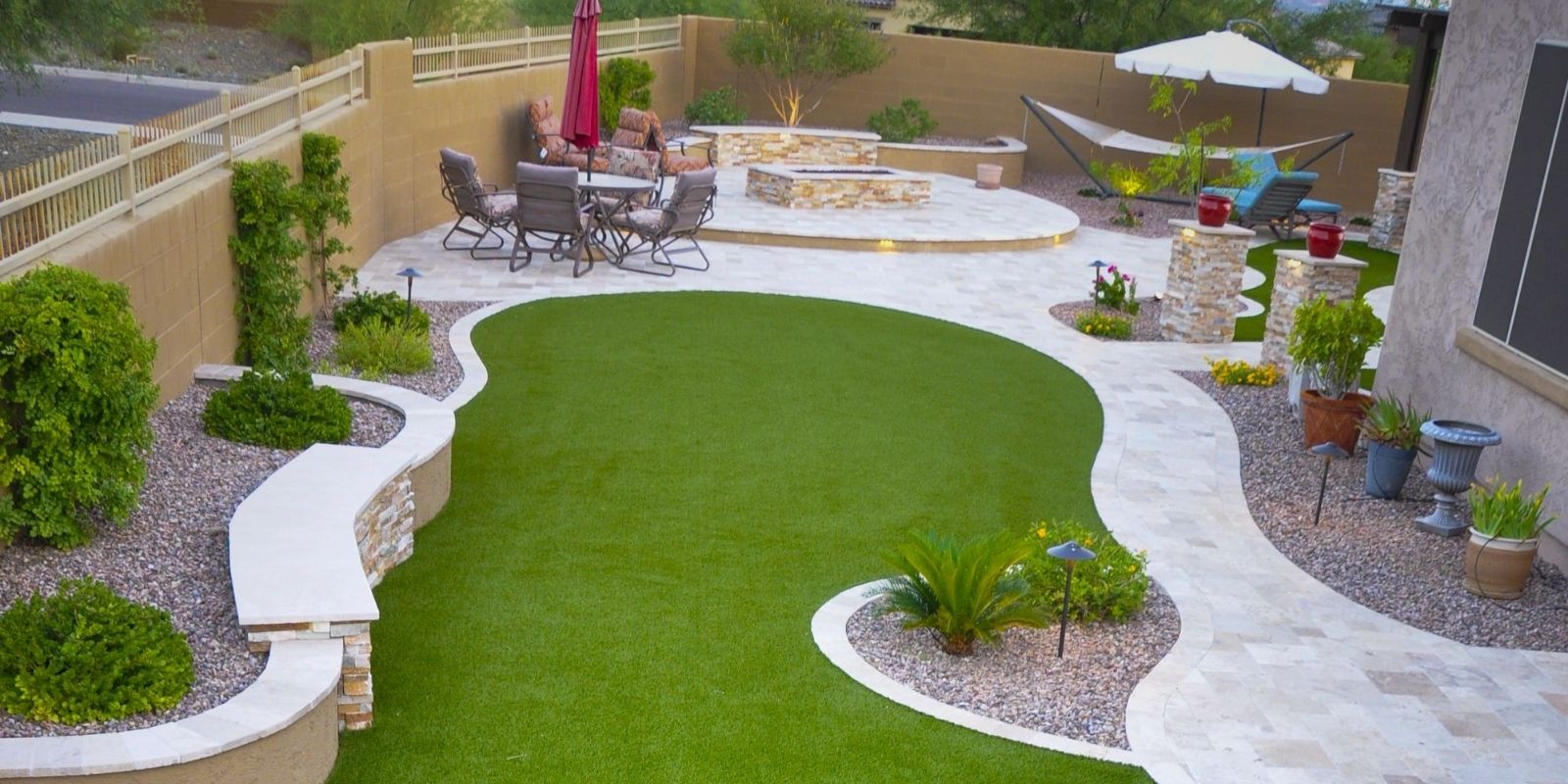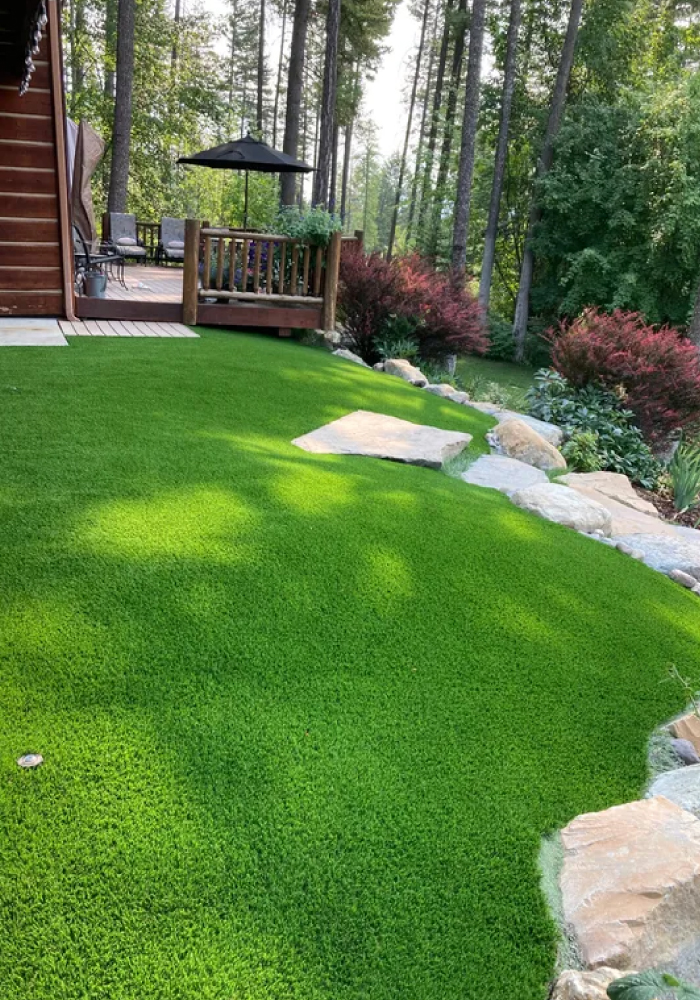Leading Phoenix Turf Companies Offering Superior Synthetic Grass Options
Leading Phoenix Turf Companies Offering Superior Synthetic Grass Options
Blog Article
Explore the Environmental Conveniences of Opting for Synthetic Grass Solutions
The fostering of synthetic grass solutions presents a compelling chance to attend to pressing environmental challenges. By substantially minimizing water use and minimizing the application of harmful chemicals, these alternatives not just advertise sustainable landscaping but also secure regional ecological communities. Moreover, the lower carbon footprint linked with lowered upkeep tasks contributes to a more lasting strategy to land administration. The effects of these benefits prolong beyond mere preservation efforts, elevating concerns about their lasting impact on environment preservation and overall eco-friendly balance. Exploring these measurements reveals a complicated interplay worth thinking about.
Water Conservation Perks
One of the most substantial advantages of synthetic turf is its capacity to preserve water. In comparison, fabricated grass does not need watering, dramatically reducing the total need for water sources.
By eliminating the need for routine watering, synthetic grass adds to sustainable landscape methods and aids mitigate the environmental impact of too much water consumption. The preservation of water expands to the decrease of drainage, which can lead to soil erosion and river pollution.
Furthermore, the installment of synthetic grass allows house owners and communities to allocate water resources much more effectively, concentrating on crucial uses such as drinking water and farming. The change towards synthetic grass not only promotes liable water use yet also straightens with more comprehensive environmental goals targeted at protecting natural sources.
As areas significantly focus on sustainability, the water preservation benefits of synthetic grass present an engaging case for its fostering in business and residential landscape design tasks.
Lowered Chemical Use
The change to fabricated grass dramatically decreases the dependence on chemical therapies typically utilized in all-natural lawn maintenance. Traditional lawn monitoring typically entails the application of herbicides, plant foods, and pesticides to promote development and control insects. These chemicals can pose risks to human health, regional wild animals, and the environment, adding to dirt and water contamination.
In contrast, man-made grass gets rid of the requirement for these damaging compounds. By decreasing the launch of synthetic compounds into the ecological community, man-made lawn advertises much healthier soil and water systems.
Additionally, the lack of chemical drainage connected with man-made lawn setups aids protect neighborhood waterways from contamination, supporting aquatic life and keeping biodiversity. Turf installation phoenix az. As neighborhoods progressively prioritize sustainable methods, going with synthetic turf provides a feasible option that lines up with environmental conservation goals. Through this change, home proprietors can take pleasure in lush environment-friendly areas without compromising ecological wellness, leading the way for an extra sustainable future
Reduced Carbon Footprint

Moreover, the setup of synthetic grass can cause significant water conservation. Natural grass call for considerable amounts of water for watering, which not only adds to the carbon footprint connected with water removal and treatment however also stress neighborhood water resources. In contrast, artificial grass requires marginal upkeep, needing no watering, thus significantly minimizing water use and its linked energy expenses.
Furthermore, the long life of synthetic grass adds to its reduced carbon effect. With a lifespan of as much as 15 years or more, the need for frequent substitutes is decreased, resulting in less waste and lower energy consumption in production and getting rid of traditional lawn alternatives. Generally, fabricated grass provides a sustainable choice for environmentally mindful landscaping.
Habitat Preservation
Environment conservation is an essential factor to consider in the discussion over landscape design options, particularly when contrasting synthetic grass to natural grass. All-natural lawn lawns commonly call for substantial maintenance, including making use of pesticides, plant foods, and herbicides, which can detrimentally influence regional communities. These chemicals can seep into the dirt and waterways, hurting indigenous plants and fauna and interfering with local environments.
On the other hand, synthetic grass presents an opportunity to reduce the environmental footprint of landscape design. By opting for synthetic lawn, property owners can decrease the disruption of natural habitats connected with conventional yard care methods. Artificial grass eliminates the demand for damaging chemicals, thereby safeguarding neighboring wildlife and her comment is here keeping the honesty of surrounding ecosystems. Additionally, the installation of synthetic grass can cause the conversion of previous lawn locations right into even more biodiverse landscapes, such as pollinator gardens or native plant areas, which can support local wild animals.
Inevitably, the shift to synthetic grass not just saves water and minimizes maintenance efforts however additionally fosters an extra unified connection in between human activities and the natural surroundings, advertising environment preservation at the same time.
Long-Term Sustainability
Long-term sustainability is a crucial consider reviewing the benefits of fabricated lawn over standard lawn yards. One of the most significant benefits of synthetic lawn is its sturdiness; it can last approximately 15-20 years with marginal maintenance, whereas all-natural turf requires frequent reseeding and replacement. This durability minimizes the requirement for constant resources, such as water, fertilizers, and chemicals, which are important for keeping a healthy yard lawn.
Additionally, artificial turf contributes to a reduction in carbon discharges associated with grass treatment devices. Standard grass often call for gas-powered lawn mowers, leaners, and blowers, all of which add to air contamination. Arizona artificial turf. In comparison, artificial lawn removes the demand for such tools, promoting a cleaner atmosphere
In addition, the production of fabricated turf significantly uses recycled products, boosting its sustainability profile. As makers take on environment-friendly practices, the environmental impact of synthetic grass continues to decrease.

Conclusion
The fostering of artificial lawn services provides significant environmental benefits, including significant water preservation, lowered reliance on unsafe chemicals, and a lower carbon impact. Furthermore, man-made grass help in preserving natural habitats by lessening land disturbance and advertising long-term sustainability with the use of long lasting materials. Jointly, these variables emphasize the potential of fabricated turf to contribute positively to ecological health and offer a practical alternative to traditional landscape design practices in a significantly resource-conscious globe.
In contrast, man-made turf does not need watering, substantially minimizing the total need for water resources. By reducing the release of artificial substances into the ecological community, synthetic lawn advertises healthier soil and water systems.
Moreover, the installment of artificial grass can result in considerable water preservation. In contrast, fabricated grass needs very little upkeep, calling for no watering, therefore considerably minimizing water use and its linked directory power expenses.

Report this page